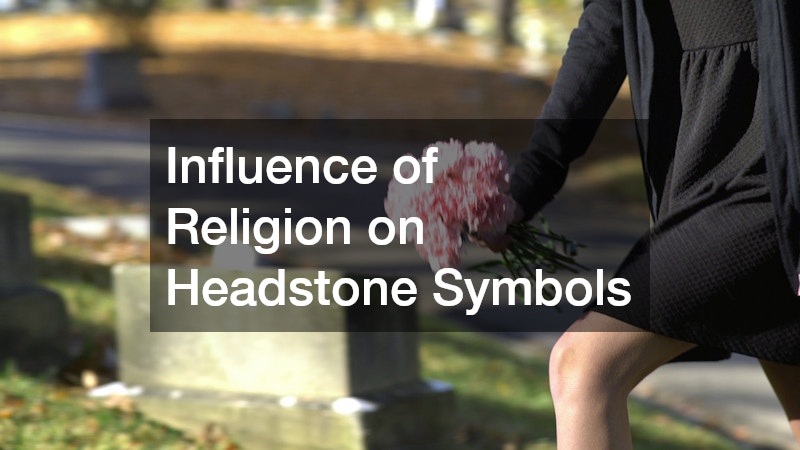Understanding the historical and cultural significance of headstone icons can offer insight into the lives and beliefs of those who came before us. This article explores the meanings behind common symbols found on headstones. Headstone icons not only serve as artistic embellishments but also convey messages about the deceased’s life, religion, and personal beliefs.
What Common Headstone Symbols Represent
Origins and Historical Context of Headstone Symbols
The tradition of carving symbols onto headstones dates back centuries and roots itself in ancient practices where imagery was used to convey status, beliefs, and messages to the divine. In earlier times, symbols were often standardized, with certain icons like the skull and crossbones representing mortality. During the Victorian era, symbolism on headstones evolved to include more nuanced motifs, reflecting changes in religious and societal perspectives on death and remembrance.
The use of symbols such as the hourglass and the weeping willow tree rose in popularity as they evoked themes of the passage of time and loss. As literacy rates increased, the complexity of headstone icons evolved, allowing for more personalized expressions. This shift signified a transformation in the cultural approach to memory and mourning, emphasizing the celebration of life.
Many early cemeteries featured iconography borrowed from religious texts and pagan traditions, a testament to the intertwining of various belief systems. These symbols served as a visual lexicon, understood by those who visited the gravesites. Consequently, examining these symbols can provide valuable insights into the era’s cultural and spiritual life.
Interpretation of Popular Icons
Among the most recognized symbols found on headstones is the cross, a powerful emblem of faith and resurrection within Christian communities. Similarly, doves often signify peace and the soul’s journey to the afterlife, frequently found on the graves of children and infants. The lily is another common symbol, traditionally associated with purity and resurrection, often found on gravesites to denote innocence and beauty.
In addition to religious imagery, flowers feature prominently, each with its distinct connotations. Roses, for instance, convey love and beauty, whereas the poppy is symbolic of eternal sleep and remembrance, particularly in wartime contexts. These botanical symbols provide a living connection to the deceased, immortalizing their virtues and sentiments.
Another iconic motif is the angel, representing divine protection and guidance on one’s journey into the afterlife. Statues of angels in various poses can depict sorrow, prayer, or gratitude. The presence of an angel on a headstone also signifies the deceased’s innocence, often adorning the graves of children.
How Headstone Symbols Have Changed Over Time
Evolution of Symbols in Modern Context
Modern headstone iconography reflects the diversification of beliefs and the personalization of burial markers. Symbols like musical notes, sports memorabilia, or even company logos capture an aspect of the deceased’s personal identity, celebrating their hobbies or lifelong passions. This trend illustrates a shift from traditional religious symbols towards more individualized expressions.
As society becomes more secular, non-religious symbols have gained prominence, allowing families to commemorate loved ones in a manner that resonates personally. Contemporary headstone symbols often embrace themes of nature and cosmos, such as trees, stars, and oceans, which speak to universal human experiences and connections. This broadening of permissible symbolism reflects an era that values individuality and diversity in cultural expression.
Comparison of Traditional vs. Modern Symbols
Traditional headstone symbols were largely communal, reflecting shared beliefs and religious convictions, which provided comfort and meaning to communities. They often emphasized collective experiences of life and death, with a focus on spiritual beliefs and moral values. Modern symbols, however, increasingly spotlight the individual, conveying personal attributes and unique qualities of the deceased.
This shift speaks to broader societal transformations where personal identity and individual stories become paramount in expressions of grief and remembrance. While traditional symbols might include more universal themes like paths, doors, or anchors, modern markers might prominently feature emblems from personal hobbies or professions. This divergence marks a change in how different generations perceive death and legacy.
Why Specific Cultures Use Distinct Headstone Symbols
Cultural Variations in Headstone Iconography
Headstone symbols differ significantly across cultures, each incorporating their historical, religious, and artistic traditions into the iconography of grave markers. In Jewish cemeteries, the Star of David is a common symbol, representing faith, identity, and connection to the community. Similarly, Celtic graves frequently feature spiral motifs and knotwork, embodying themes of eternity and interconnectedness, deeply rooted in ancient Celtic art and mythology.
In Eastern cultures, simple yet profound symbols such as the lotus flower represent enlightenment and spiritual rebirth, prominently imprinted on headstones. Islamic traditions often reject imagery, instead inscribing headstones with verses from the Quran or Arabic calligraphy, emphasizing the spiritual beliefs. Such cultural manifestations underscore how symbols function as crucial links to a community’s spiritual and ethical heritage.
Influence of Religion on Headstone Symbols
Religion plays a pivotal role in the design and symbolism of headstones, offering motifs that reflect the beliefs and values of the deceased and their families. Christian grave markers frequently employ crosses, angels, and biblical icons to denote faith and hope in resurrection. In contrast, Buddhist and Hindu markers may emphasize symbols like the conch shell and wheel of life, illustrating paths to spiritual awakening.
The religious context not only dictates the visual representation on headstones but also the narratives they are meant to communicate. These depictions often serve as a religious testament, reminding the living of the spiritual pathways and lessons imparted by their faith. Due to this, religious symbols tend to remain consistent over centuries, maintaining their significance across generations.
Headstone symbols are a powerful testament to the human need for expression, remembrance, and identity. By decoding these icons, one can connect more deeply with historical narratives and cultural traditions. As society evolves, so too do the symbols we choose to represent ourselves, mirroring our diverse backgrounds, beliefs, and personal journeys.

